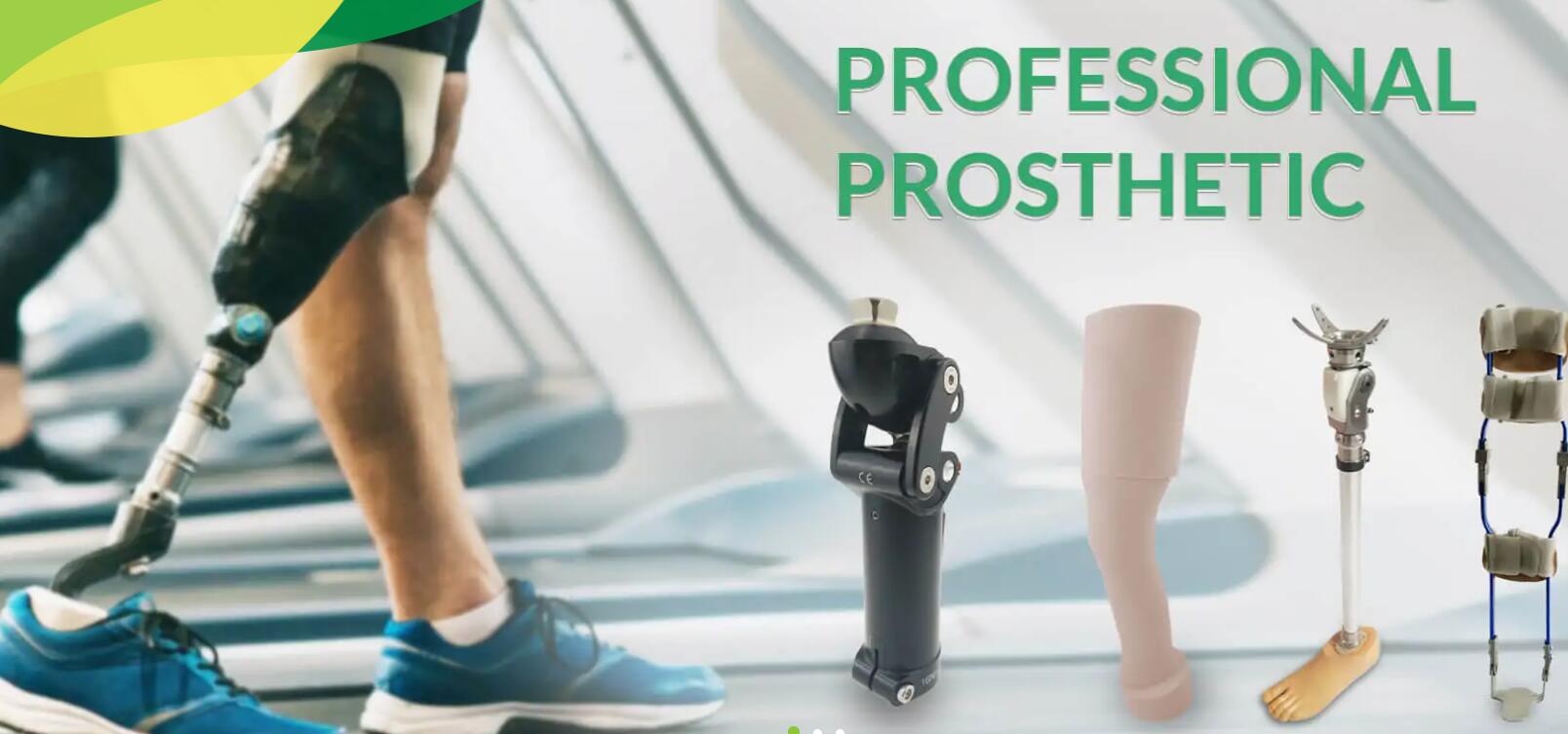Jul. 23, 2022
Health & Medical

Introduction
Over the past decade, technology and research have greatly expanded the functionality and aesthetics of prosthetic feet. Today, amputees have a wide array of feet from which to choose. Various models are designed for activities ranging from walking, dancing and running to cycling, golfing, swimming and even snow skiing. Heavier wood and steel materials have been replaced over the years by lightweight plastics, metal alloys and carbon-fiber composites. Much like the human foot, many of today’s prosthetic feet can store and return some of the energy generated during walking. Other key attributes included toe and heel springs that allow more natural movement at the ankle, shock absorption, multi-axial rotation, adjustable heel heights, and waterproof materials.
A number of factors must be considered when selecting the right foot/feet for your lifestyle. These factors include your amputation level, age, weight, foot size, activity level, goals and occupational needs.
Structurally, prosthetic feet can be divided into two groups: those with a rigid connection to the prosthetic shank (non-articulated) and those with a hinged ankle mechanism (articulated). In terms of function, prosthetic feet can be categorized into the following groups:
Solid Ankle Cushioned Heel (SACH)
Elastic (flexible) Keel Foot
Single-Axis Foot
Multi-Axis Foot
Dynamic-Response Foot
Microprocessor Foot.
Definitions
Although not all are discussed in this Fact Sheet, the following are definitions of terms you may hear when discussing various types of prostheses, fitting needs and activity requirements with your prosthetist and physician. This knowledge may help you choose which type of prosthesis is the most appropriate for you and your daily activities and needs. Never hesitate to ask for clarification from your prosthetist or physician if you do not understand something they say. You are an important part of your medical team.
Internal and External Rotation: Internal rotation refers to movement of a joint or body part toward the center of the body, while external rotation refers to the opposite rotation of a joint away from the body.
Further reading:Dorsiflexion and Plantarflexion: The upward (dorsi) and downward (plantar) movements of the ankle and toes. These movements alternately enable the leg to move forward over the foot, pushing the forefoot to the ground as one takes a step.
Inversion and Eversion: The inward and outward, or side-to-side, motions of the ankle
SACH and Elastic Keel Foot
The most basic prosthetic feet come in two types: Solid Ankle Cushioned Heel (SACH) and Elastic Keel configurations. These designs consist of crepe neoprene or urethane foam molded over an inner keel and shaped to resemble a human foot. Because they have no hinged parts, these basic feet are relatively inexpensive, durable and virtually maintenance-free. These feet offer cushioning and energy absorption but do not store and return the same amount of energy as dynamic-response feet. SACH and elastic keel feet are generally prescribed for amputees who do a limited amount of walking with little variation in speed.
SACH Foot: The SACH is the simplest type of non-articulated foot. The name refers to a somewhat soft rubber heel wedge that mimics ankle action by compressing under load during the early part of the stance phase of walking. The keel is rigid, which provides midstance stability but little lateral movement. The SACH foot is available in various heel heights to match individual shoes with different heel heights.
Elastic (flexible) Keel Foot: This prosthetic foot allows motion similar to that of SACH feet. In addition, the forefoot is able to conform to uneven terrain but remains supportive and stable during standing and walking.
Single-Axis Foot and Multi-Axis Foot
Articulated prosthetic feet may be single-axis or multi-axis in their design. “Axis” refers to motion in one or more of three different planes, similar to the movement of the natural foot. Prosthetic feet that have movement in two or three axes provide increased mobility at the ankle, which helps stabilize the user while navigating on uneven surfaces.
Prosthetic Feet 03Single-Axis Foot: The articulated single axis foot contains an ankle joint that allows the foot to move up and down, enhancing knee stability. The more quickly the full sole of the foot is in contact with the ground, the more stable the prosthesis becomes. This is beneficial for users with higher levels of amputation (an amputation anywhere between the knee and hip). The wearer must actively control the prosthesis to prevent the knee from buckling, and the single-axis ankle/foot mechanism reduces the effort required to do so. Unfortunately, the single-axis ankle adds weight to the prosthesis, requires periodic servicing, and is slightly more expensive than the more basic SACH foot. A single-axis foot may be more appropriate for individuals where stability is a concern.
Prosthetic Feet 04Multi-Axis Foot: Although similar to the single-axis foot in terms of weight, durability and cost, the multi-axis foot conforms better to uneven surfaces. In addition to the up and down mobility of the single-axis foot, a multi-axis foot can also move from side to side. Since the added ankle motion absorbs some of the stresses of walking, this helps protect both the skin and the prosthesis from wear and tear.
The Best Prosthetic Foot for You
Just as there is no single tool perfectly suited for every job, there is no single foot that is perfect for every amputee. Knowing the available options will enable you to discuss this issue clearly with your prosthetist. Evaluate the pros and cons of different feet so you can make the best choice for your individual aspirations and abilities. In comparing the potential benefits of microprocessor-controlled systems over other systems, physicians and prosthetists should focus on the functional aspects of the prosthetic foot and its level of appropriateness, given the user’s individualized needs and goals. Please contact us!
More articles:
Exploring the Evolution and Functionality of Prosthetic Feet
Related Articles
If you are interested in sending in a Guest Blogger Submission,welcome to write for us!
All Comments ( 0 )